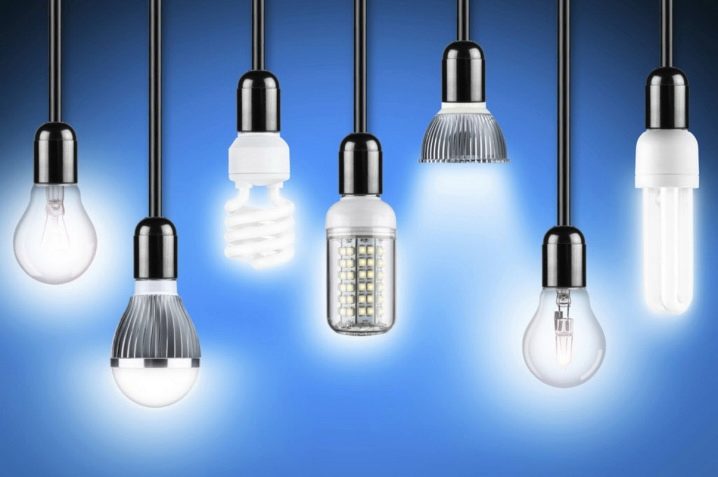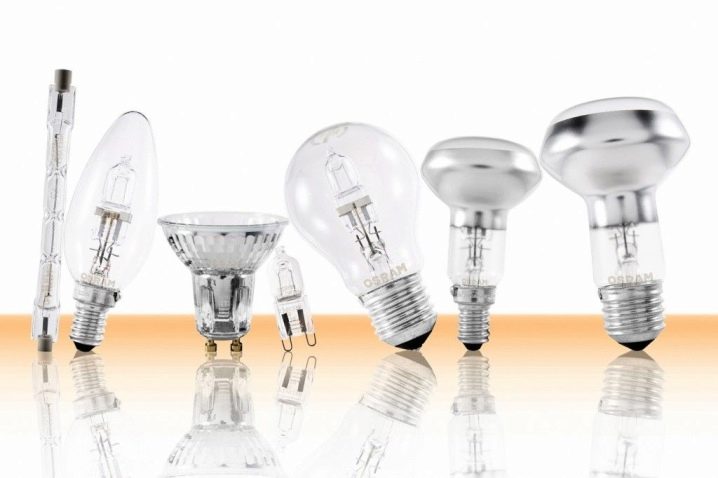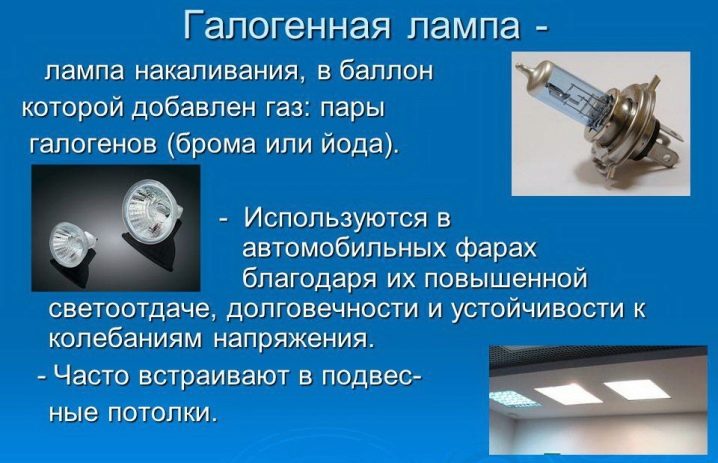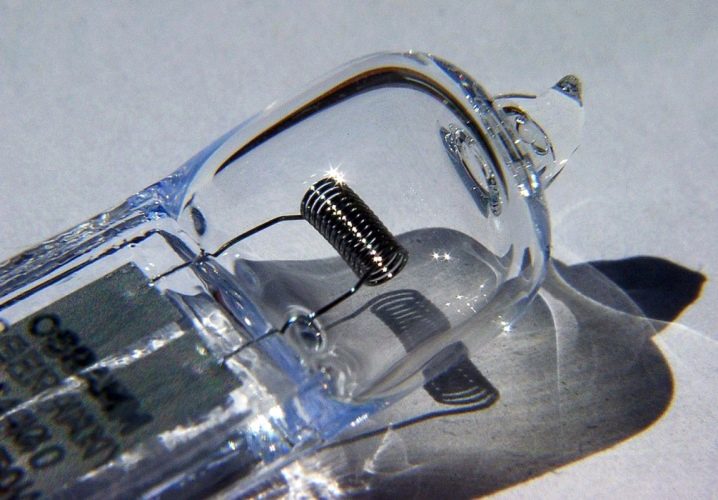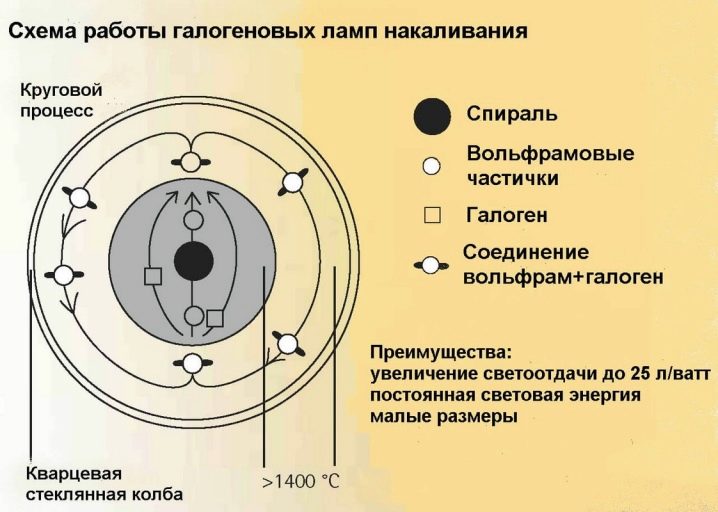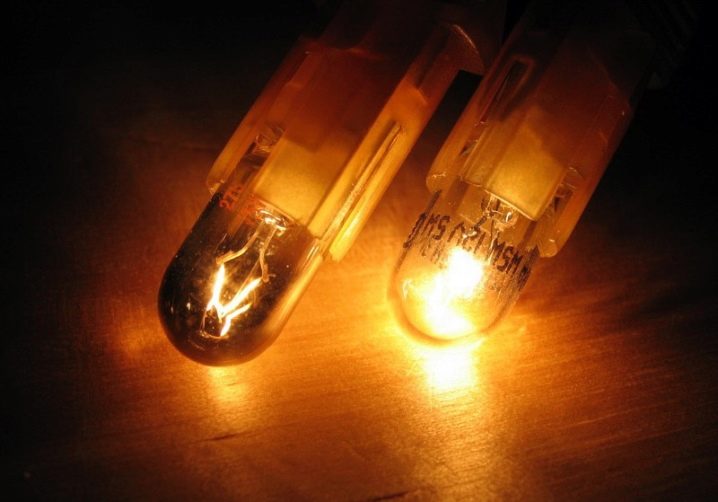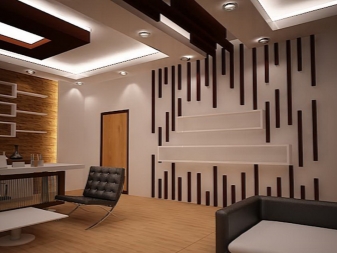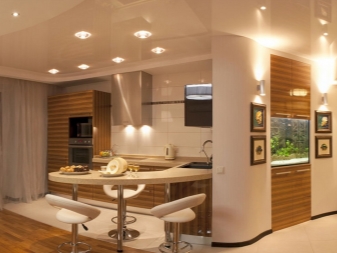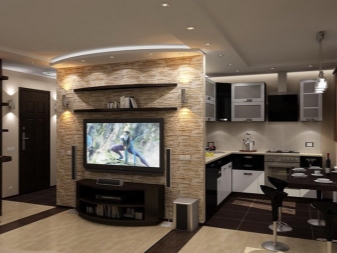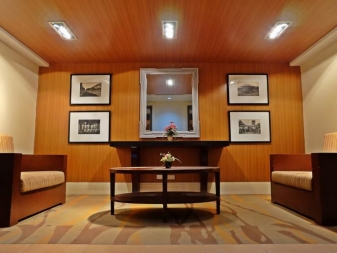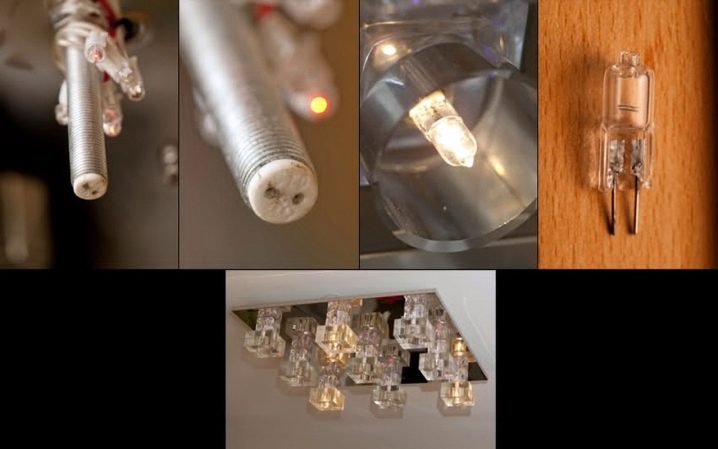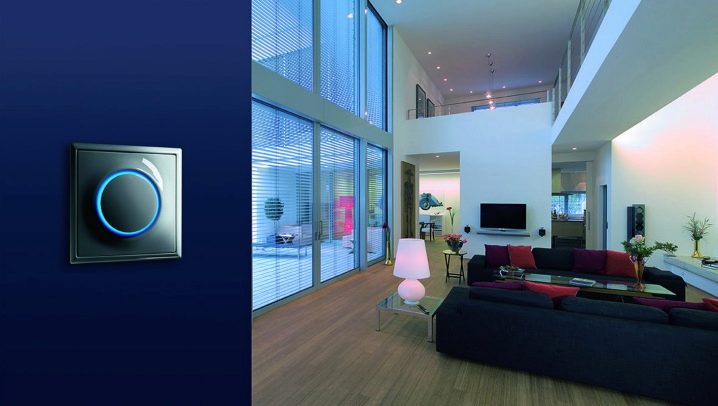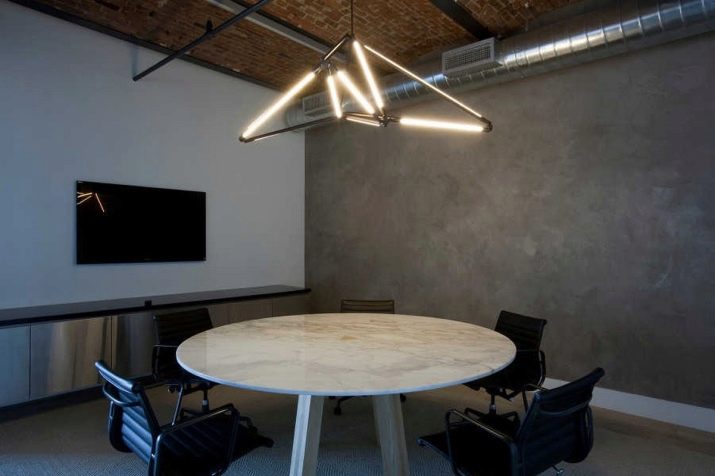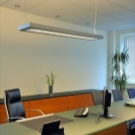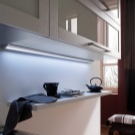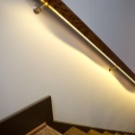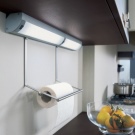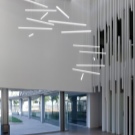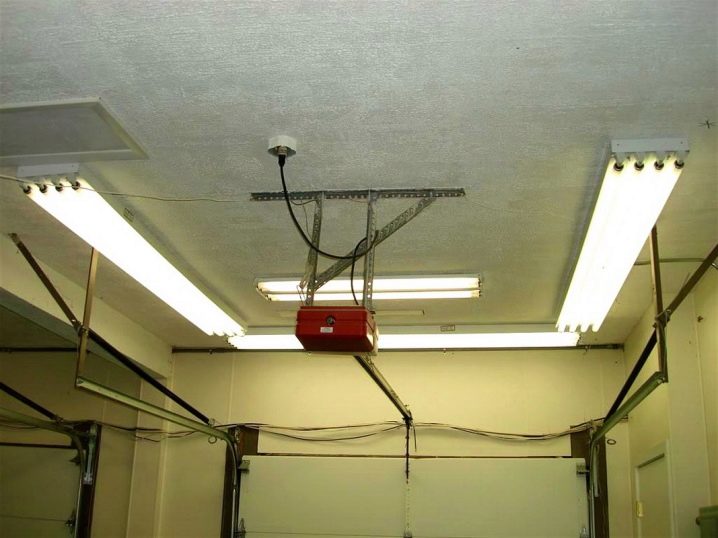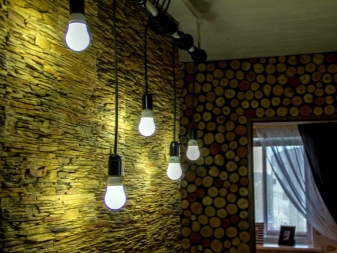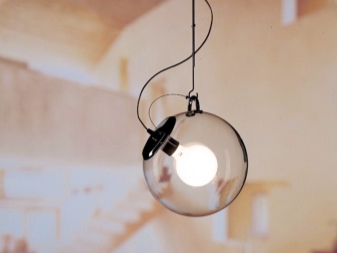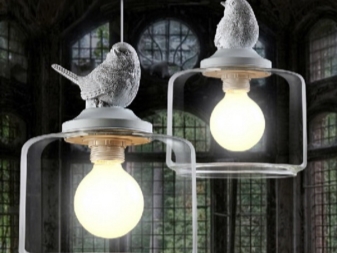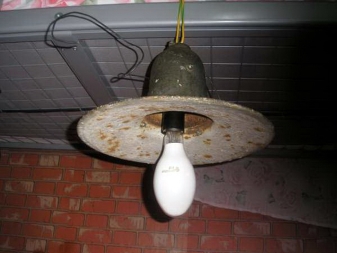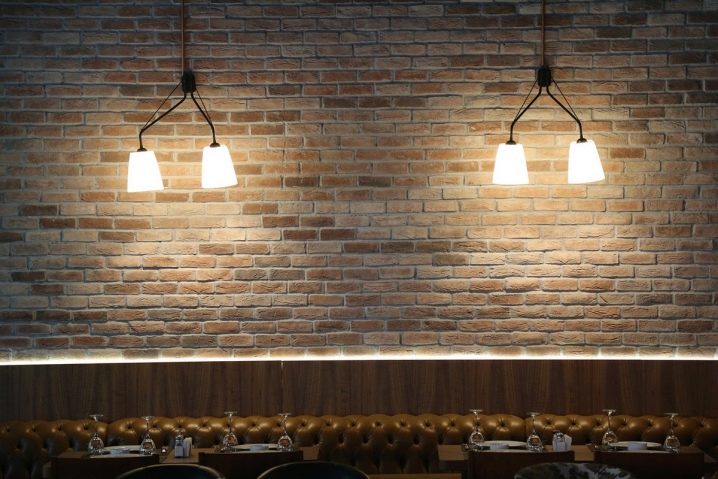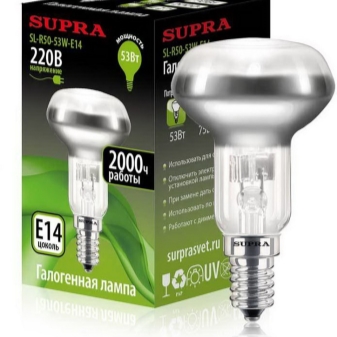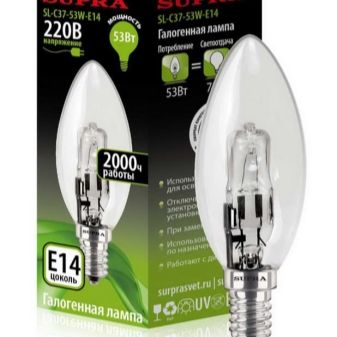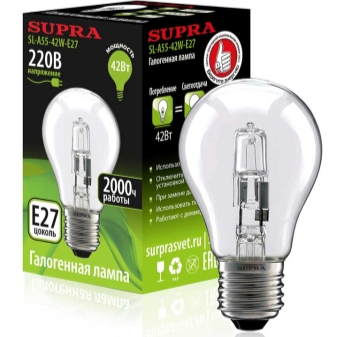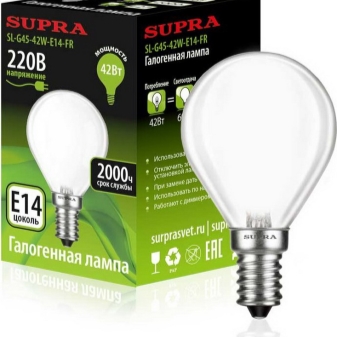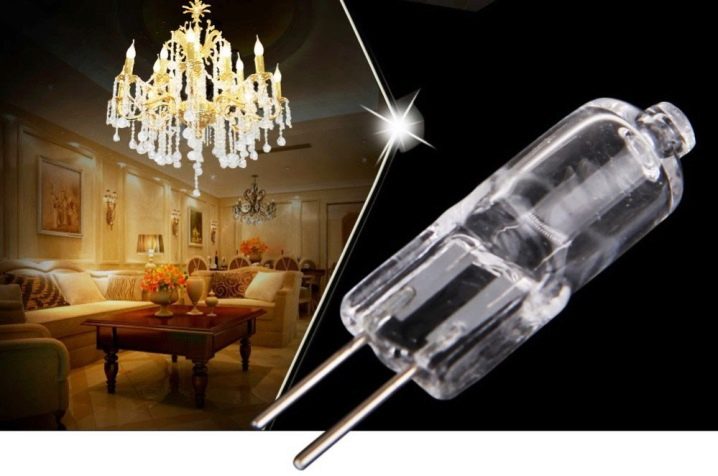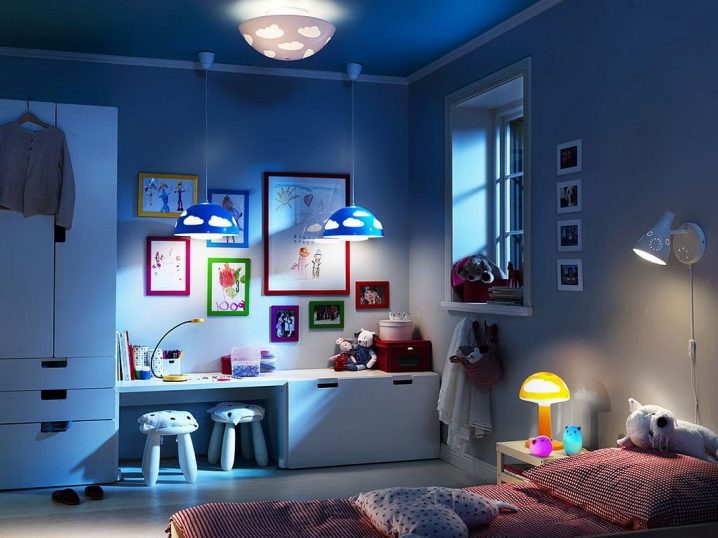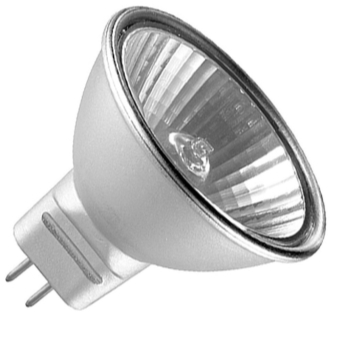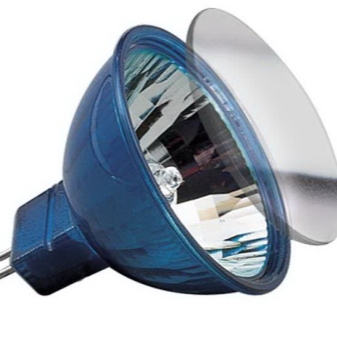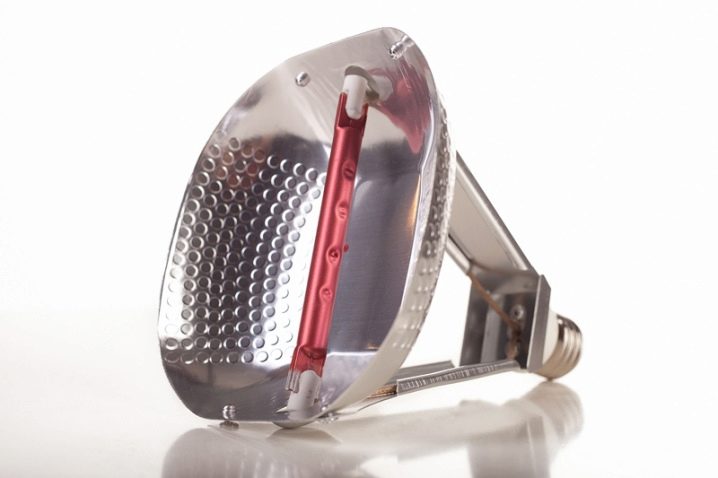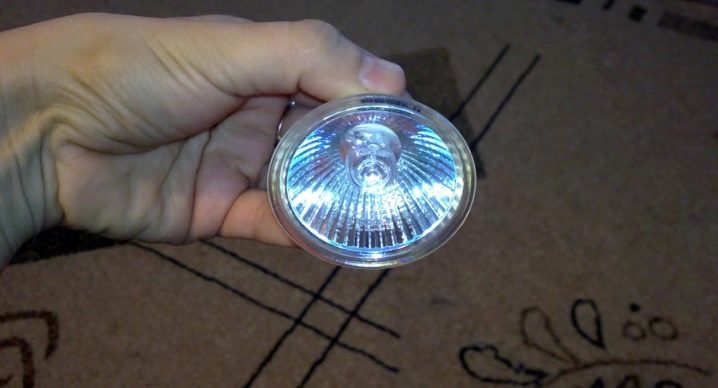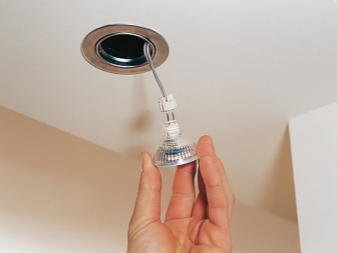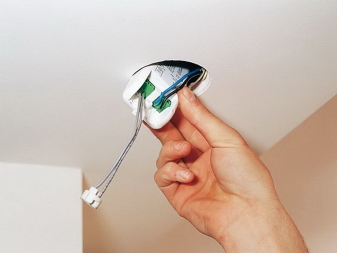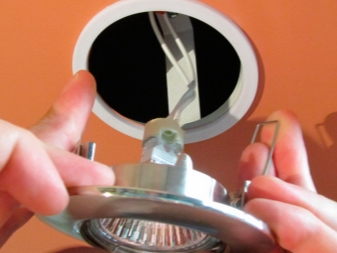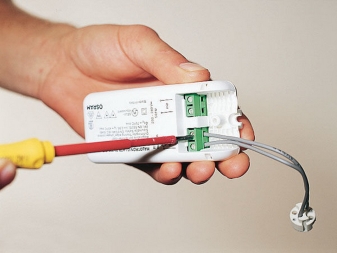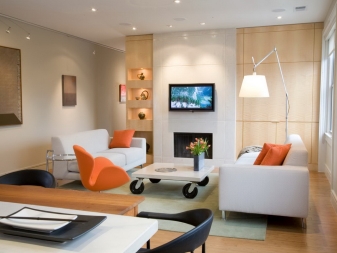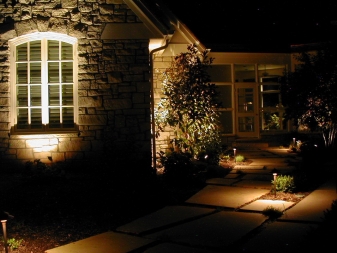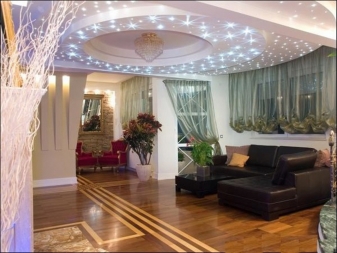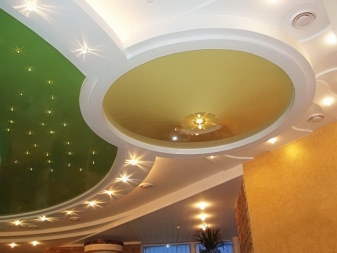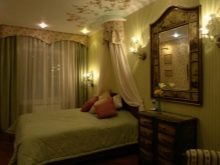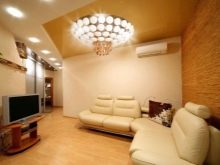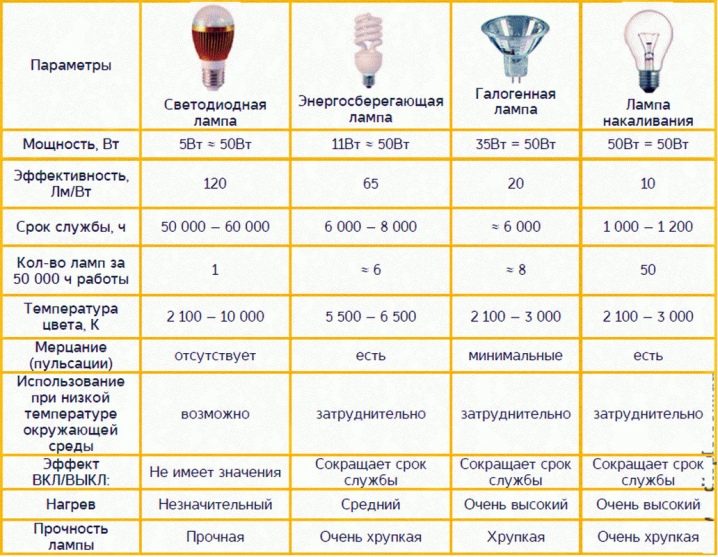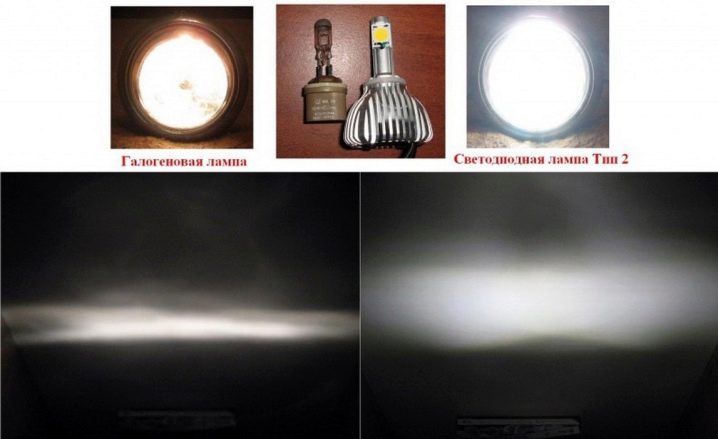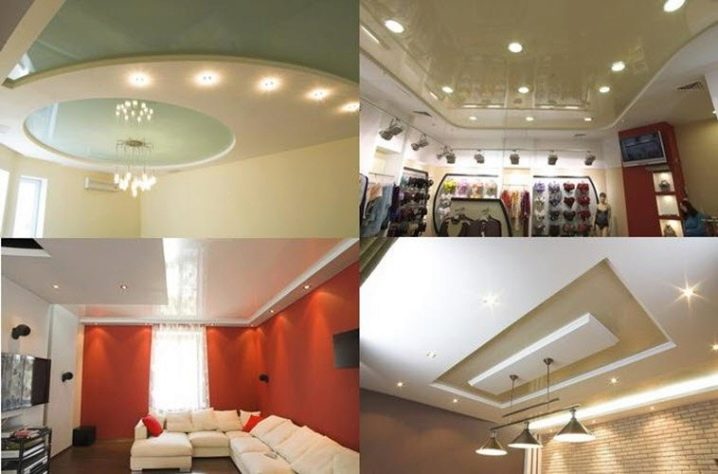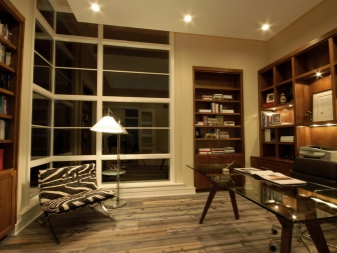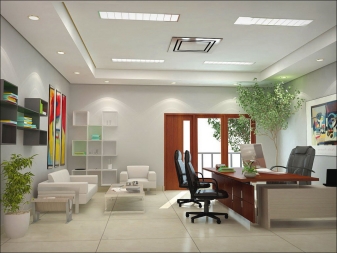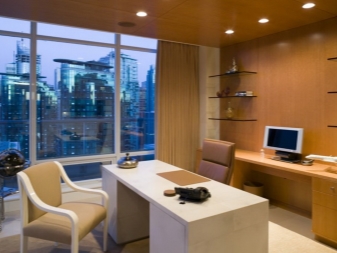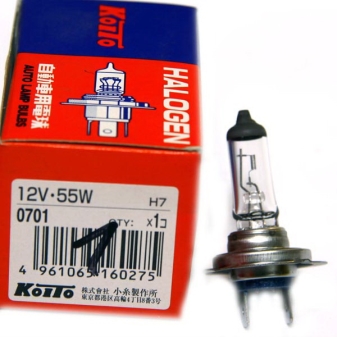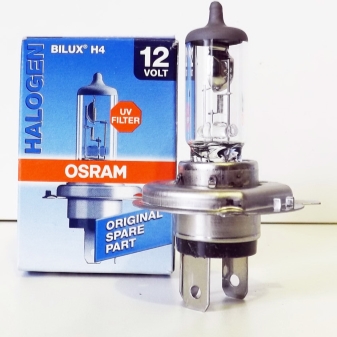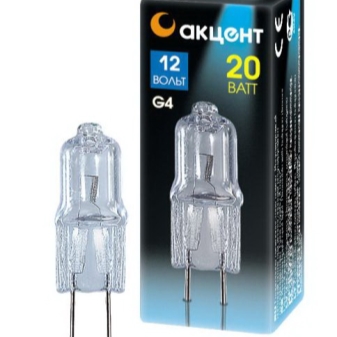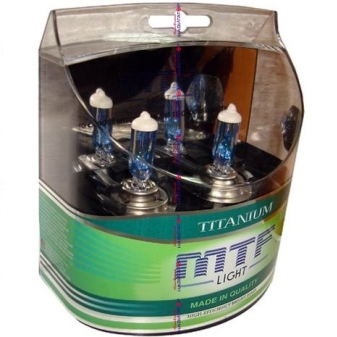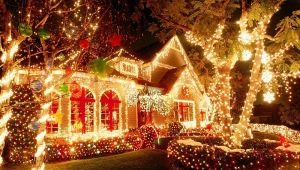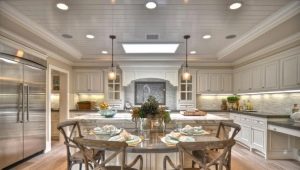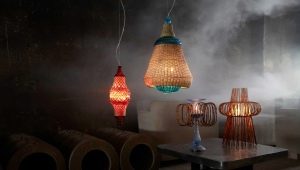Halogen lamps for the home
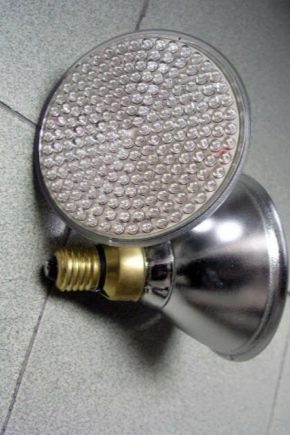
High prices for electricity lead to the fact that people are trying to save money on a similar resource by purchasing a variety of energy-saving light bulbs and appliances. Choosing a lamp for home use, you need to pay attention not only to its efficiency, but also for long-term use, as well as other criteria and characteristics.
Halogen lamps for the home are very popular with consumers, as they are characterized by a long service life, perfectly illuminate the room, and are also presented in various shapes and sizes.
What it is?
Halogen lamps are similar to conventional incandescent bulbs. For the manufacture of an incandescent body is used wire of tungsten, which is twisted into a spiral. The bulb itself is a glass flask, in the middle of which a glowing body is placed and a special gas is injected. Bromine or iodine vapor is used as a similar gas.
They do not allow the tungsten evaporating during the heating process to settle on the walls of the light bulb. Thanks to the use of such gases, the service life of the halogen lamp is increased compared with other lighting devices. The flask itself is made from a special material - quartz, it easily transfers high temperature drops. Thanks to the heat resistance of the quartz bulb, its dimensions can be very small compared to other light bulbs.
Thanks to the addition of bromine or iodine, it turned out almost completely to remove such a process as the darkening of the bulb, which over time influenced the quality of the flow of light, making it weaker and dim.
The principle of operation and properties
Despite the similarity of halogen and conventional incandescent bulbs, the principle of action is significantly different.When using a halogen bulb, when the filament is very hot, volatile tungsten compounds are released. Due to the filled bromine or iodine, which reacts with tungsten atoms, the latter elements are not able to settle on the walls of the flask.
A similar process has the opposite reaction: when such compounds are close to the filament, they begin to disintegrate into their component parts. It turns out that the tungsten atoms released from the decomposed compound return to the heated tungsten spiral or settle near it. The returned tungsten atoms prolong the life of not only the filament, but also the bulb itself.
Halogen lamps have a very good color temperature, the spectrum of colors emanating from them conveys warmer colors than other lighting fixtures.
The distinctive features of these bulbs include:
- The ability to create a variety of lighting options in rooms - from a beam of light, which will be narrowly directed in one direction, to create a diffused light flux, which will differ in large width, and will remove the slightest hint of a shadow.
- The luminous flux will not fade after a certain time, even if such a bulb will remain constantly on.
- The lighting is brighter, although the power may be the same. For example, an ordinary incandescent bulb of 60 watts will be comparable in power to a halogen bulb of 40 watts.
- The small dimensions make it possible to use it as spot lighting on suspended ceilings, creating even original lighting compositions.
- Energy-saving effect is created due to the high brightness and improved color reproduction.
The indisputable advantage can also be attributed long service life. In order for the selected device to serve you as long as possible, you need to choose the right kind of light bulb, matching its characteristics with your needs.
Classification and technical specifications
Despite the fact that halogen lamps are a little inferior in efficiency to fluorescent, they are widely popular, as they do not require special modifications. They are used with a dimmer and a switch with illumination for creating lighting in apartments and for lighting non-residential premises.Using special lenses, “halogens” are installed by many drivers also in car headlights.
Depending on the design features and methods of use, halogen lamps are divided into several types.
Linear lamp
This is the oldest kind of similar products. It is made in the form of a small pipe made of quartz. It has two findings that are on both sides. Incandescent filament held due to the presence of special mounts. The plinths (R7s) are also placed on both sides of this lamp. In addition, it differs in rather modest size. A similar product is characterized high power, which it consumes, so it should not be used as a household lighting fixture.
Lamps are installed mainly for floodlighting.
There are also modern variations of the linear halogen lamp - a lamp that floods the light. It is characterized by high impact resistance. Such modifications can be used for domestic purposes as a source of indoor or outdoor lighting. Please note that most models of linear light bulbs should be located in horizontal planes so that the capacitors do not go outside.Even a small angle of inclination can cause damage to this device, significantly reducing the life.
With external bulb
This device is powered by mains voltage. Its appearance is very similar to the usual incandescent lamp. The purpose of their production was the replacement of conventional incandescent bulbs. They do not need special fixtures or a specific connection method. Bulbs with external bulb can be connected directly to the household electrical network, without the use of a transformer. Such products are characterized by the usual standardized E27 and E14 base.
If we take into account that the service life of tungsten lamps depends on the voltage, as well as how stable it is supplied, then during the installation of the new lighting it is better to connect halogen products through a specialized device - a unit to protect halogen bulbs. Such a regulator will allow you to create a smooth start, acting as a filter, it will save the lighting device from unstable voltage operation.
The outer bulb in size and shape may correspond to the usual incandescent bulb.A linear or tiny halogen light bulb will be located in the middle. The outer shell is used to protect the quartz cone from unnecessary contact and pollution.
There are some variants of such products, which will differ external flasks. They can be:
- milky color;
- made of transparent glass;
- frosted or tinted;
- created from glass, which absorbs almost fully ultraviolet rays.
Since the inner flask is small in size, this contributes to the fact that the outer shell can also have miniature parameters. Therefore, such capsule lamps can be used in tiny lamps, while maintaining sufficient illumination. They can also be produced in the form of hexagons or candles to replace conventional light bulbs in decorative lamps.
With light reflector
This is one of the most popular types of halogen bulbs, the demand for which is constantly increasing, as they are used as spotlights, as well as to form lighting in the whole room.Due to the accurate transmission of light, such products do not have a detrimental effect on the eyes and do not tire them. Such reflex lighting is used in children's rooms so that the child can draw, read and do favorite things for a long time without straining his eyesight once again.
Reflex halogen lamp consists of a small cone located in the central part of a special reflecting element - a reflector. Thanks to such a device, the redistribution and focusing of the flow of light produced by the lamp into space is carried out. Reflectors are made from a variety of materials, but the most popular are aluminum reflectors, as they allow to remove heat forward, thereby protecting the surrounding surface from overheating.
Such a low-voltage capsule lamp can easily be used in open-type luminaires. Lamps with a reflector of light can become a real decoration of the ceiling, forming a semblance of a starry sky or other optical illusions, depending on your imagination and the chosen style for arranging the room.
Infrared
They belong to the economical version of halogen bulbs, as they reflect infrared radiation. In a similar product, the flask has a special coating that prevents the transmission of infrared rays, but allows them to reflect back, returning them and halogen vapor back to the filament. In connection with this, the power of such a light source increases.
How to connect and replace?
Before buying, ask to check the halogen light bulb. Such a check will save you from unnecessary actions, for example, if after installing or replacing such a product, the light does not appear, then you will know that the problem is not in the lamp itself, but in the wiring or incorrect connection.
During the installation and replacement of light bulbs follow the simple rules:
- Do not touch light bulbs with bare hands. There is sebum on the hands, and even the slightest bit of it on such a device can greatly reduce the useful life.
- Installation and replacement of such products is best done in cotton gloves. Some manufacturers add such gloves in the kit to the lamp or lamp. If these gloves were not at hand,take a dry clean rag.
- If you touch the bulb with your hand, be sure to defat it. To do this, wipe the product with alcohol. Wait until it is completely dry, it will take some time (approximately half an hour). If you do not wait for it to dry out and start replacing halogen bulbs, alcohol residue may flare up during heating.
- Take care to purchase a transformer to which you can connect a dimmer. These components will protect the halogen lamps from excessive voltage drops and will protect the devices from short circuit.
- Place the transformer no closer than 30 centimeters from light bulbs to prevent the instruments from overheating.
- Installing a special device with a smooth start will also help to extend the life of similar products. In addition to everything else, you will have a beautiful and eye-pleasing increase in the brightness of the lighting.
- When reworking or replacing a blown bulb, do not immediately touch it; it will be very hot and may burn you.
- If you are installing a halogen bulb in a false ceiling, then take care to create excellent ventilation.Since during operation such bulbs emit a large amount of heat and in the absence of ventilation they will quickly deteriorate and burn out.
After replacing the halogen bulb, it must be disposed of. Such products are safe, the content of halogens in them is negligible, so they can be thrown into the bin with other household waste.
Do not just throw these products into containers for recycling glass, as the structure of their glass is different from that of which the bottles are made.
Where are they used?
Halogen lamps are widely used both for lighting inside and outside the room:
- If such a product has a large size, then it is used as a searchlight to illuminate the streets or the territory of a country house.
- Spotlights can perfectly fit into any interior, no matter what style it is made. Such spot lighting can emphasize or delimit individual zones or transitions of space. For this purpose, capsule or reflector models are used.
- Such bulbs can be installed on stretch ceilings, embedded in aluminum or plasterboard structures, it all depends on the design ideas and ideas.
- Ceiling lamps are able to mimic the starry sky, creating a romantic mood or setting up a positive mood. Using dimmers, you can adjust the lighting, creating an intimate atmosphere in the bedroom.
- As a replacement for conventional incandescent bulbs, halogen models can be installed in chandeliers and other ceiling lights.
- Due to the fact that the illumination created by halogen bulbs does not have a negative impact on vision and does not tire the eyes, they are very often installed in floor lamps or bedside lamps. A directional beam of light will allow you to read an entertaining book or magazine, lying in bed or sitting comfortably in your favorite easy chair.
- Halogen light bulbs are no less popular with motorists, since they make it possible to perfectly illuminate the road at night or in conditions of insufficient visibility.
Comparison with LED: pros and cons
Despite the great popularity of halogen bulbs, some consumers prefer to choose LED analogues instead of a halogen lamp.Asking which ones are better for using light bulbs at home, We will try to compare two products by key characteristics:
- If we analyze the consumption of electricity, then halogen bulbs consume it more than diode ones. But compared to conventional incandescent bulbs, halogen bulbs are a more economical and profitable option.
- Both models are distinguished by a large transmission of light, the difference is that the LED backlight can emit light, which differs in color temperature. That is, for example, the white light of diode bulbs can be different, ranging from warm to cold hues.
- LEDs are considered the brightest types of light bulbs; with less consumption of electrical energy, they produce more power. The disadvantages of halogen lamps can also be attributed to their heating during operation, diode lamps are heated to a lesser extent.
- There are differences in the service life of such products. Halogens shine and burn out after 2.5 thousand hours of continuous operation, for LED models this figure is higher and amounts to 100 thousand hours of continuous lighting.
- Despite all the above characteristics, halogen bulbs have a significant advantage over diode counterparts - this is their value. Not everyone will be able to allocate from the family budget a substantial amount for the purchase of one light bulb, not to mention if you need to replace spotlights throughout the apartment or house. Get a huge and impressive amount. Unlike diodes, halogens can afford each without causing serious damage to the family budget.
- The disadvantages of diode lamps also include the inability to create a uniform distribution of the flow of light. They are characterized by a generally directed flow, which in some cases can cause “spotting”.
How to choose?
When purchasing halogen lamps, be sure to pay attention to the base and dimensions of the bulb itself. It is very important that such an element be located as far as possible from those parts of the lamp that can melt under the influence of increased heat coming from the lamp. Otherwise, the lamp may deteriorate or cause a fire.
If halogen bulbs are to be placed in the room,where there is high humidity, for example, using it for a bath or lighting in the bathroom, then low-voltage options should be preferred.
Depending on personal preference, you can opt for cold white light from halogen bulbs or for warm yellow lighting.
Remember that for a study or office, where the eyesight is constantly strained while working at a computer or various kinds of documentation, it is better to choose white light, which will most closely match daylight. For a home environment, a soft yellow light is preferable. since the eyes in such light are not so tense.
You can use the original versions of lamps to create extraordinary spot lighting in suspended or stretch ceilings. If you plan to create lighting for exhibition stands, storefronts in stores, as well as unusual lights, it is recommended to use colored halogen lamps, for example, red, orange or blue.
Also, when choosing a halogen lamp, you can focus on customer feedback,who have already managed to take advantage of a particular product.
Examples and options
The most popular options for halogen lamps include products:
- Osram - lamps are used for installation in automobile headlights, illumination of retail space, creation of internal and external lighting in rooms and on the street.
- Firms MTF - the company manufactures products that are used to create lighting in cars.
- Japanese manufacturer Koito - the company offers a wide range and model range. Their products are installed both to create lighting in the room, and for outdoor use.
- Domestic brand "Optima" - lamps are not only high quality, but also an acceptable price. Therefore, such a product can afford to anyone, regardless of the level of their income.
See the following video for a comparison of LED and halogen lamps for the home.
